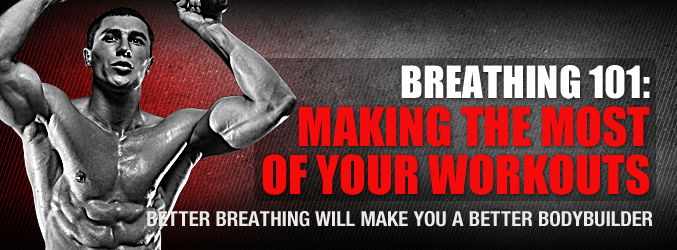
In weight lifting, we always look at the same things. And of course, they’re the big things. We are big people, after all! We look at sets. Reps. Compound movements. Isolation exercises. We focus upon the big, heavy, bold things in the gym. We warm up the muscle groups, push it to the limit for our sets, and repeat. Our training partner shout positive motivation and we do the same. We lift big to get big. Easy enough, right?
Outside of the gym, our thinking is usually along the exact same lines. Sleep plenty & eat a lot of the right foods, and you’ll grow. It works, at least in the beginning. Take your supplements, avoid stress, and keep mixing up the factors. The body will continue to adapt and adjust to the training which you throw at it. You’ll grow bigger if you keep challenging the body with training, nutrition, supplementation and recovery.
However, never in this great organized list of bodybuilding tasks is there ever anything mentioned about the one simple process, always happening, and without which, we could do none of this bodybuilding business… Breathing!
Human beings take 20,000 breaths each day. You may not ever think about it until you catch a cold and it becomes labored. Your breathing is involuntary, although you can manage it when you see fit. Well, bodybuilding training – any kind of training for that matter – is one area where breathing management can be a very valuable tool. Ready to learn more?
Better breathing will make you a better bodybuilder. Let’s start off by assessing your current breathing practices during training. Most people can benefit from minor adjustments to the way they are breathing. Standing wrong or tucking your neck incorrectly can lead to less-than-optimal progress in your training. Better mobility and training results can be found, if you’re breathing correctly.
Let’s look at your current breathing pattern. Start with standing practice. You should be breathing without fighting gravity. Take a big chest breath. Is your lower back moving forward? This will have implications with your lifting. This can lead to poor form when training with exercises such as the squat or deadlift. You’ll be pulling air using your chest, shoulders and neck – and this is all wrong!

Are you using your belly to pull in air? If so, you’ll notice the lower back and hips are also tilting, leading to the same lifting issues. Additionally, minimal air will reach the upper lungs. This air pressure internally will help you to maintain posture. This is a common problem with many people who are belly breathers. Laying down, the same tenets apply when breathing. We all sleep 8 hours each night. If your belly expands greatly when breathing, your chest will not expand optimally.
Finally, many people do not exhale properly when breathing. They don’t let out ALL of the air in their body. They take in a lot of air, and only blow out some air. When this happens 20,000 each day, the hip flexors can run into trouble due to being chronically stretched. You shouldn’t be breathing with your chest or your belly. Rather, you should be pulling air with the diaphragm.
One can learn to reset the breathing pattern in order to do it correctly. Lay on the ground with your feet elevated up on the wall, with 90 degrees at the knees, and 90 degrees at the hip. Focus on breathing absolutely perfectly, using the diaphragm. Your foot should meet the wall at your big toe, small toe, and heel. Keep your back flat against the wall. Head should be forward with the chin tucked in. Neck extensions are not necessary! Relax the shoulders.
Always breathe in through the nose. Always exhale fully through the mouth. Let out every bit of air in the lungs. Keep the midsection tight. Continue breathing in through the nose, and out of the mouth. Keep this pattern going for 5 minutes of steady practice. Do not exhale using the glutes in order to use the hips to exhale. You don’t exhale with the butt – you exhale using the abs! This further demonstrates the importance of complete abdominal and core development.

Standing breathing practice should apply the same rules. Proper hip position will allow you to
Stand with feet together and knees touching, if possible. Drop to a squatting position. Keep chin tucked. Breathe. Take deep breaths and use the thighs to offer continued increasing resistance, which will force the lungs to exhale fully, with every single breath. Do not keep the back fully flat when breathing or bending. You should be capable of bending that lumbar curve. This will allow the diaphragm to expand at an optimal level.
Outside of training, you can adjust your breathing in the non-training hours to recover more efficiently. Practice slowed breathing in the evenings. You’ll fall asleep faster. Try it in the mornings to give your body more oxygen early on, in order to get the brain and muscles of the body filled with blood and oxygen faster, to better face your day.
The devil is in the details. Poor breathing in the gym can lead to lesser results in real life. You should be capitalizing upon every possible benefit at your disposal, and that includes the way you take each breath. Breathe in using your nose. Take deep breaths using the diaphragm and then breathe out using the mouth. Allow ALL air to leave your body. Don’t make the hips or back choose an uncomfortable position to move the air. It’ll take practice, but over time, your body will become a more effective and efficient breathing machine. This will protect your core from injury, allow more oxygen to reach your bloodstream, and make you an overall healthier and more effective weight lifter. Good luck!


